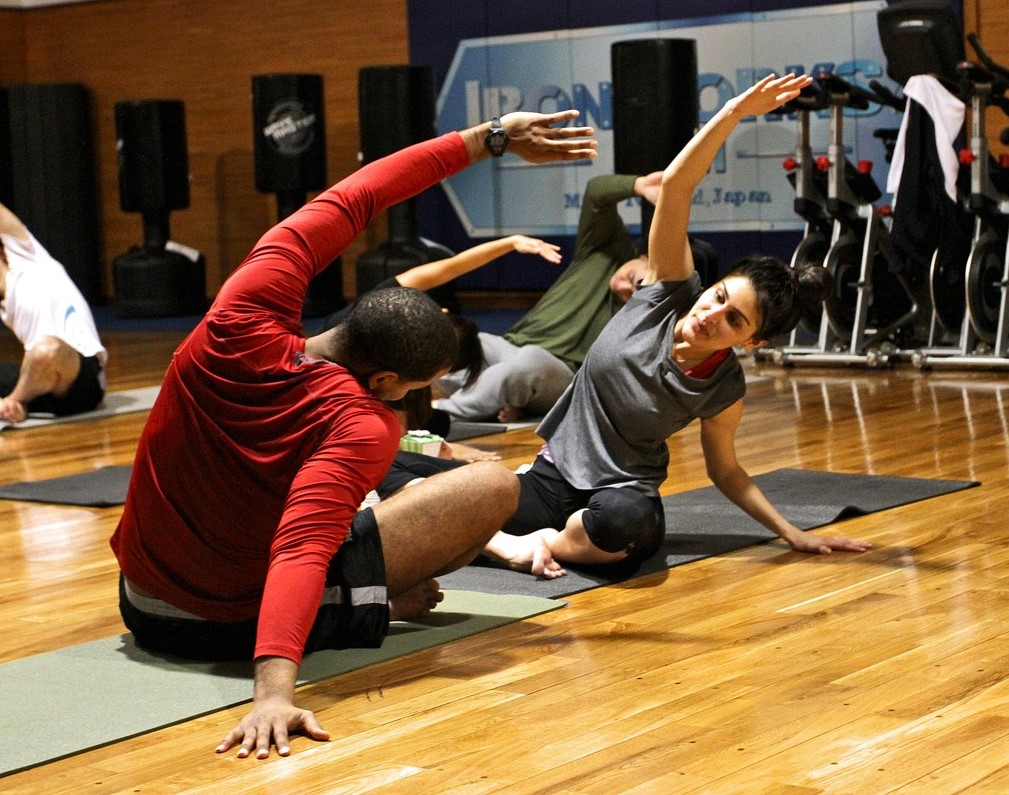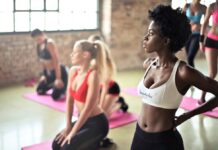When is the best time to stretch? What kind of stretching is best before, during, or after your workout and other times of the day? We delve into the science of stretching, explore the differences between dynamic and static stretching, and provide guidance on when to stretch and the most effective stretching techniques.
DYNAMIC STRETCHING
Dynamic stretching is a type of stretching that involves active movements of the muscles and joints to gradually increase the range of motion. It helps increase blood flow to the muscles, elevate heart rate and body temperature, and activate the nervous system, all of which contribute to improved muscle performance and reduced risk of injury during physical activity. It differs from static stretching, where you hold a stretch in one position for a period of time. Dynamic stretching is typically used as part of a warm-up routine before exercising to prepare the body for movement and reduce the risk of injury.
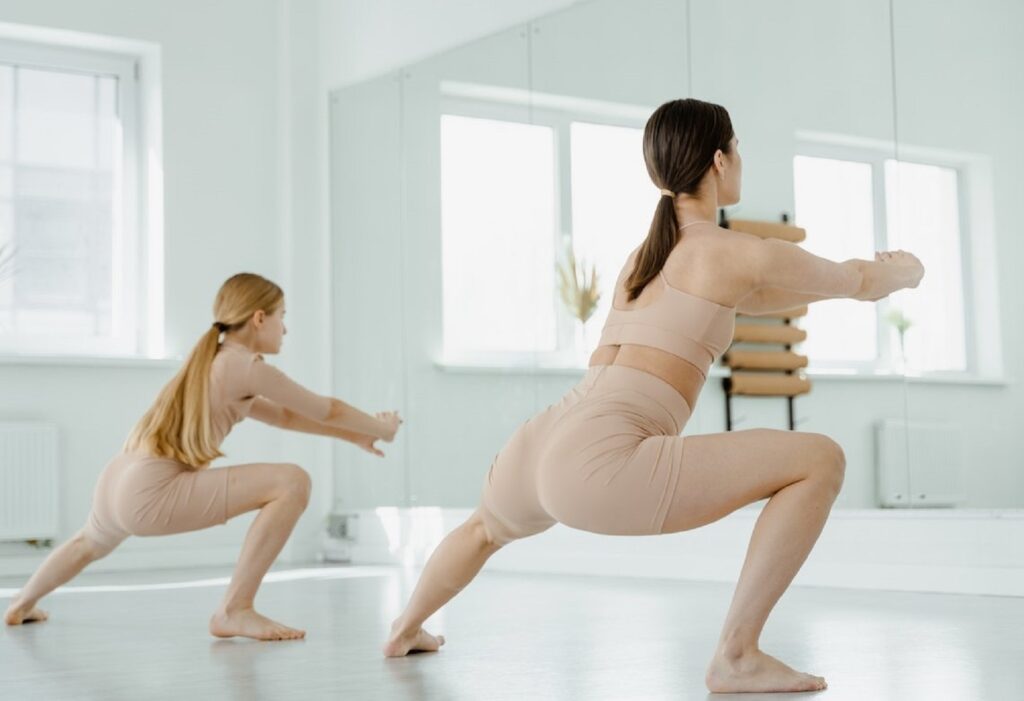
DYNAMIC STRETCHING KEY CHARACTERISTICS
Active Movements: Dynamic stretches involve actively moving your limbs or joints through their full ranges of motion. These movements mimic the motions you’ll perform during your workout or activity.
Controlled and Smooth: The movements are controlled and smooth, without any bouncing or jerky motions. The goal is to gradually increase flexibility and range of motion.
No Prolonged Holds: Unlike static stretching, dynamic stretching does not involve holding a stretch for an extended period. Instead, you continuously move through a series of stretches.
Specific to Activity: Dynamic stretching exercises are often tailored to the specific activity you are about to engage in. For example, if you’re preparing for a run, dynamic stretches might include leg swings or hip circles.
DYNAMIC STRETCHING EXERCISE EXAMPLES
Leg Swings: Stand next to a support (like a wall or railing), and swing one leg forward and backward in a controlled motion, gradually increasing the range of motion.
Arm Circles: Stand with your feet shoulder-width apart and make circular motions with your arms, gradually increasing the size of the circles.
Walking Lunges: Take a step forward into a lunge, keeping your back knee just above the ground, and then alternate legs while walking forward.
High Knees: Walk or jog in place while bringing your knees as high as possible with each step.
STATIC STRETCHING
Static stretching is a form of stretching where you hold a particular muscle or group of muscles in a fixed position for a period of time, usually between 15 to 60 seconds. This is characterized by minimal movement during the stretch, as opposed to dynamic stretching, where you actively move your muscles and joints through a range of motion. Static stretching is commonly used to enhance flexibility and can be an essential part of a well-rounded fitness routine. It is especially beneficial in the post-exercise, cool-down phase to help prevent muscle soreness and maintain or improve flexibility.
STATIC STRETCHING KEY CHARACTERISTICS
Hold and Relax: Assume a specific stretch position and hold it steady and comfortable without any bouncing or movement.
Longer Duration: Hold for 15 seconds to a minute or more.
Improved Flexibility: The primary goal of static stretching is to improve flexibility and increase the length of the muscles and connective tissues. It helps to elongate and relax the muscles.
After Exercise: It is typically performed after exercise or physical activity as part of the cool-down routine. It reduces muscle tension, prevents stiffness, and promotes relaxation.
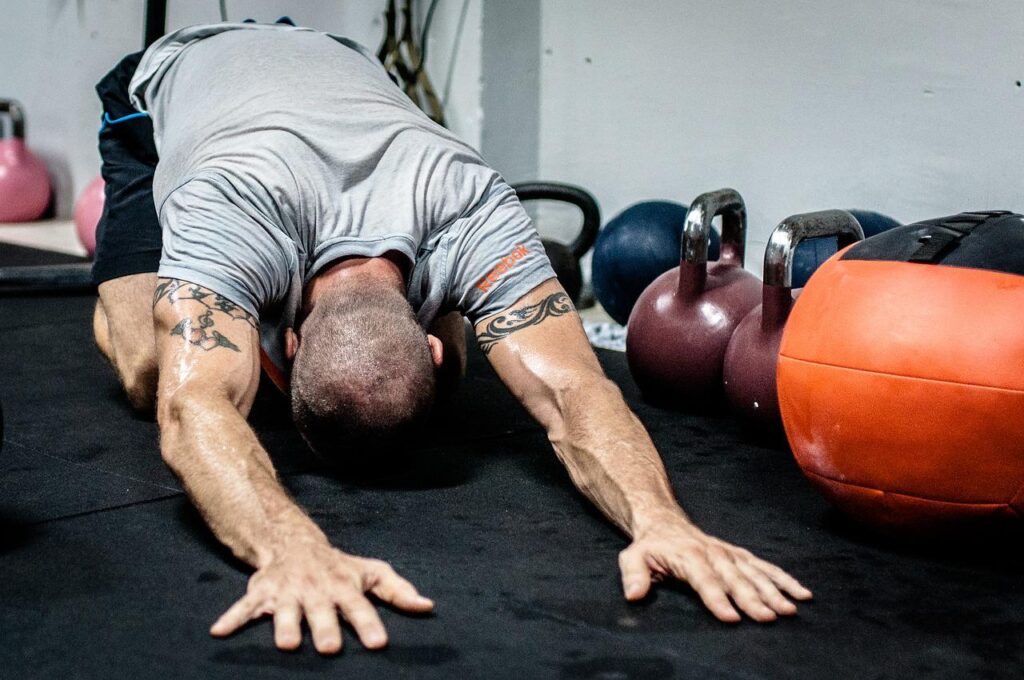
STATIC STRETCHING EXERCISE EXAMPLES
Standing Quadriceps Stretch: Stand on one leg, bend your other knee, and hold your ankle behind you while gently pulling your heel toward your glutes to stretch the quadriceps muscles.
Hamstrings Stretch: Sit with one leg extended and the other foot against the inner thigh of the extended leg. Reach forward and hold your toes to stretch the hamstrings.
Shoulder Stretch: Gently pull one arm across your chest and hold it in place with the opposite arm to stretch the shoulder and upper back muscles.
Calf Stretch: Stand facing a wall, place your hands on the wall, and extend one leg behind you while keeping the other bent. Lean into the wall to stretch the calf muscles.
WHEN TO STRETCH: WORKOUT
Before Exercise (Dynamic Stretching)
Dynamic stretching, often referred to as a “warm-up,” involves actively moving your muscles and joints through a range of motion, and is best performed before exercise. Dynamic stretching helps increase blood flow, heart rate, and body temperature, effectively preparing your muscles for more strenuous activity. A study in the Journal of Strength and Conditioning Research suggests that dynamic stretching can improve athletic performance [1]. In contrast, pre-workout static stretching can negatively affect performance.
During Exercise (Active Isolated Stretching)
Active isolated stretching (AIS) is the best style of stretching to do between sets. It combines some of the speed of dynamic stretching with the holds (though briefly held) of static stretching. It’s like a weightless set. Hold a stretch for the body part you’re focused on for two or three seconds, return to the start position for two or three seconds, and then stretch again. Repeat for up to 10 such active isolated stretches. Calves and lats are two good candidates for AIS between sets. Calves can be stretched on the footpad where you’re doing your sets, and lats can be stretched by grabbing a vertical bar with one hand and pulling. For heavy power exercises, such as deadlifts or squats, it’s generally not recommended to stretch between sets, as it can negatively impact performance. For other exercises, stick to the AIS formula of quick stretches.
After Exercise (Static Stretching)
A survey of all relevant studies found that static stretching before exercise harmed performance, including strength, but static stretching after exercise can help reduce muscle soreness [2]. So, save static stretching for just after your workout to increase flexibility and help with muscle recovery.
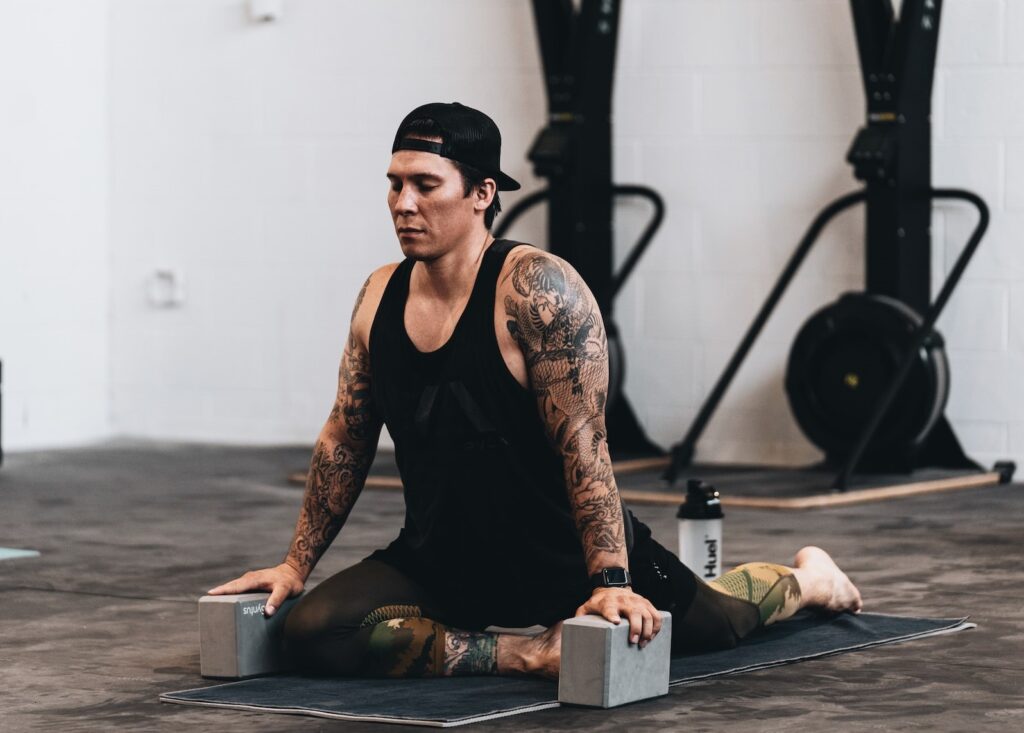
WHEN TO STRETCH: NON-WORKOUT
Throughout the Day
Stretching occasionally during the day is recommended, especially if you have a sedentary job. Short, gentle stretches at regular intervals can help prevent muscle stiffness. Research supports the idea that incorporating short stretching breaks into your day can improve overall well-being [3].
Yoga or Pilates
If you practice yoga or Pilates, you’re already engaging in a comprehensive stretching routine. These practices incorporate a combination of dynamic and static stretches that can enhance flexibility and body awareness. A study published in Complementary Therapies in Medicine highlights the positive effects of yoga on flexibility and balance [4].
Morning and/or Evening
Many people find that incorporating a short stretching routine into their morning and evening rituals helps them start the day feeling more alert and end it feeling relaxed. Morning stretches can help awaken your body, while evening stretches can promote relaxation and better sleep.
HOW TO STRETCH EFFECTIVELY
To stretch effectively and safely, follow these guidelines:
Breathe: Maintain a steady and relaxed breathing pattern. Deep, controlled breaths can help relax your muscles and improve the effectiveness of the stretch.
Avoid Bouncing: Never bounce during a stretch, as it can lead to muscle strain. Instead, hold a static stretch gently and steadily for 15 seconds or more.
Target Major Muscle Groups: Focus on major muscle groups like hamstrings, quadriceps, and back muscles. Stretching these areas can significantly improve overall flexibility.
Progress Gradually: If you aim to improve flexibility over time, make sure to progressively increase the intensity and duration of your stretches.
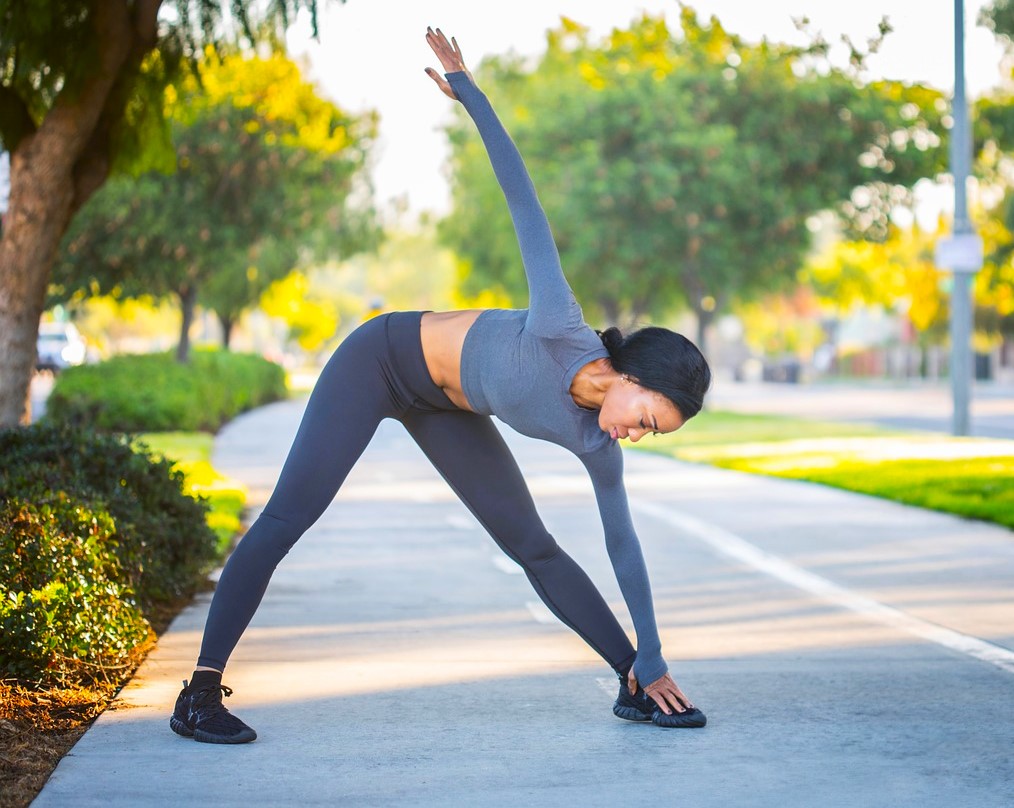
WHEN AND HOW TO BEST STRETCH: CONCLUSION
Incorporating stretching into your daily routine is essential for maintaining flexibility, preventing injuries, and promoting overall well-being. The timing of your stretches depends on your goals and activities. Dynamic stretching is ideal before exercise to prepare your muscles, while static stretching is effective after exercise to enhance flexibility and recovery. Additionally, incorporating short stretching breaks into your daily routine can help prevent muscle stiffness and improve posture. The key to reaping the benefits of stretching is consistency, so make it a part of your daily life to unlock the full potential of your body’s flexibility and strength.
Sources
1. Behm, D. G., et al. (2011), “Acute effects of muscle stretching on physical performance, range of motion, and injury incidence in healthy active individuals: a systematic review,” Journal of Strength and Conditioning Research, 25(2), 344-361.
2. Simic, L., et al. (2013), “Does pre-exercise static stretching inhibit maximal muscular performance? A meta-analytical review,” Journal of Sports Science & Medicine, 12(2), 270-281.
3. Donald, J., et al. (2016), “Effects of workplace-based short exercise breaks on employee performance, productivity, and well-being,” American Journal of Lifestyle Medicine, 12(3), 262-270.
4. Toschi, A., et al. (2018), “The effects of yoga on shoulder and spinal flexibility in preadolescent children,” Complementary Therapies in Medicine, 37, 29-33.
Related content:



































